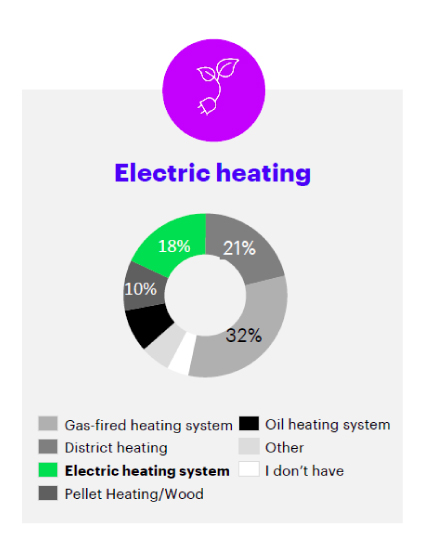3 reasons why heat pumps are the future of Europe’s clean and renewable heating

80% of heating demand in the EU today is met by fossil fuels. We need that 80% to become 0% by 2050 to decarbonise our economy and reduce our dependence on emitting fuels.
The good news is that the power sector already has a direction, one that sees millions of heat pumps installed every year across Europe to reach 50 million by 2030.
Why heat pumps? Let’s find out
Smart, flexible, and energy efficient: heat pumps’ magic formula
Cheaper and cleaner heating is now needed more than ever. Heat pumps offer a powerful solution to this growing need as they are at least four times more energy efficient than gas and oil boilers. These electric appliances can turn one unit of electricity into four units of heat by condensing natural low-level heat from the outside air, ground, and water into significantly higher indoor heating.

Households and businesses can cut their heating carbon footprint by 75% by installing a heat pump and potentially reach net zero with a fully decarbonised grid. Moreover, such devices enable consumers to reduce their average electricity use, thereby saving energy and money on their bills.
Heat pumps are often equipped with intelligent energy management systems or smart meters. This way heating systems can respond to price signals and grid CO2 levels by matching demand when cheap renewable energy is available, thus avoiding peak hours and storing excess energy to reduce waste.
Choosing a heat pump is also a practical way for consumers to contribute to the energy transition by enabling demand-side response. This is then ensured by suppliers and demand-side services such as aggregators who remotely monitor the electric device.
Households and businesses can cut their heating carbon footprint by 75% by installing a heat pump and potentially reach net zero with a fully decarbonised grid. Moreover, such devices enable consumers to reduce their average electricity use, thereby saving energy and money on their bills.
Heat pumps are often equipped with intelligent energy management systems or smart meters. This way heating systems can respond to price signals and grid CO2 levels by matching demand when cheap renewable energy is available, thus avoiding peak hours and storing excess energy to reduce waste.
Choosing a heat pump is also a practical way for consumers to contribute to the energy transition by enabling demand-side response. This is then ensured by suppliers and demand-side services such as aggregators who remotely monitor the electric device.
Some aggregator services are free of charge for customers and can unleash effortless savings not just for the heat pump owner but for the entire community. The main reason is they increase energy demand elasticity vis-à-vis prices, in other terms, consumption can be adjusted when prices are more interesting.
Scaling up demand-side response everywhere in Europe is only possible if Member States allow its entry into the electricity wholesale market as an alternative to generation. While the Commission’s Clean Energy Package has acknowledged the possibility, it hasn’t so far been adopted into national law.
Enhanced flexibility is crucial to manage grid voltage and avoid congestion explains Oliver Franz –Committee Chair at Eurelectric and Vice President of European Associations at E.ON. He noted, however, that a massive upscale of heat pumps might create issues for the grid due to high electricity demand. Operating demand-side response is thus crucial to balance the grid, especially when considering renewable deployment needs.
As estimated in Eurelectric’s Power Barometer, Europe would need to unlock 753 GW of new renewable capacity to meet the RePowerEU targets. While massively rolling out renewable projects, however, flexibility must be factored in. Deployment should be matched with an equivalent flexibility boost to ease renewable integration to the grid.
Marcia Poletti – Head of European System Change at Octopus Energy –confirms:
“Unless you can bring more flexibility online you will inevitably see the cost of integrating renewables increase”
Heat pumps can provide that flexibility, but sales must quickly accelerate to have such an impact.
What is standing in the way of a heat pump-led heating revolution?
High upfront costs, low citizens’ awareness, and lack of trained personnel risk hampering heat pumps’ needed uptick.
Financial support, trusted advice, and certified installers are the three key enablers public and private authorities must now focus on to support heat pumps become mainstream.
Eurelectric has discussed of such challenges and opportunities with a panel of top-level experts at the European Sustainable Energy Week’s conference on “Consumer value, steady power: how heat pumps can help transform the electricity grid”.
We are now stepping up our efforts to push for cheap clean and renewable heating all over Europe with our new platform Power to Buildings, to be launched on 20 October in Brussels.